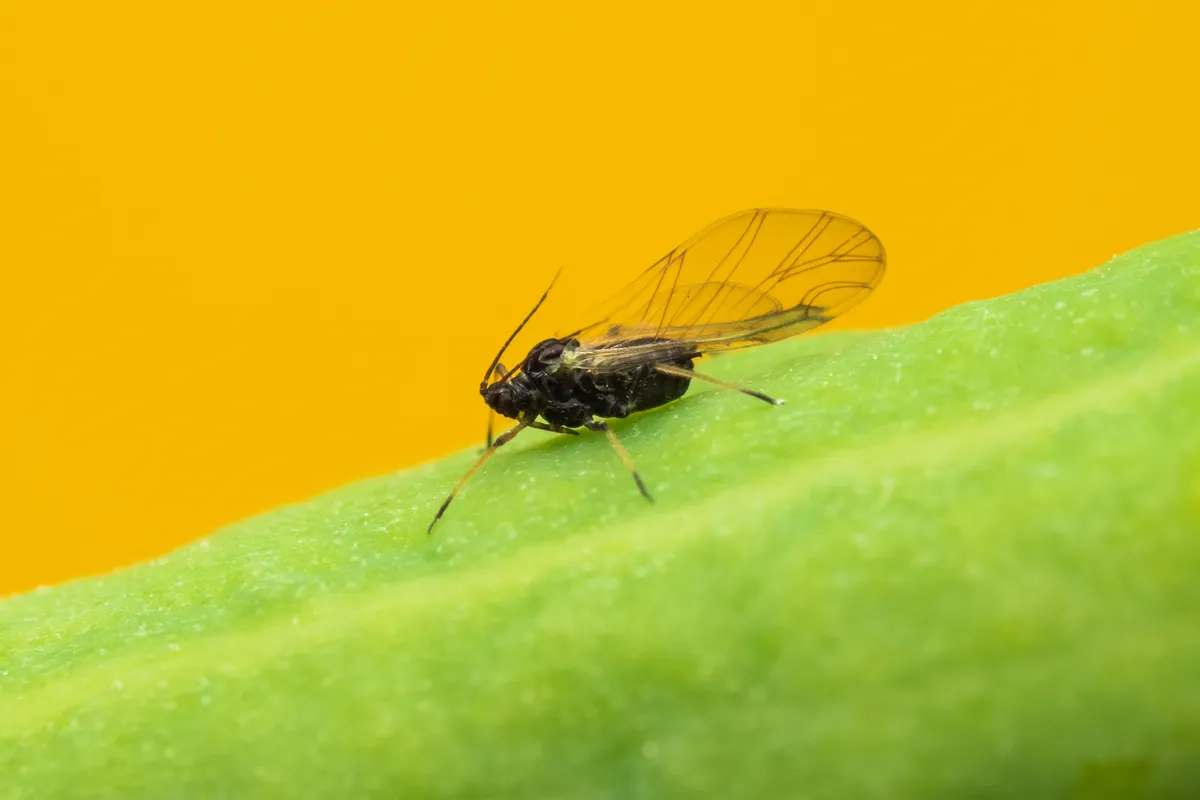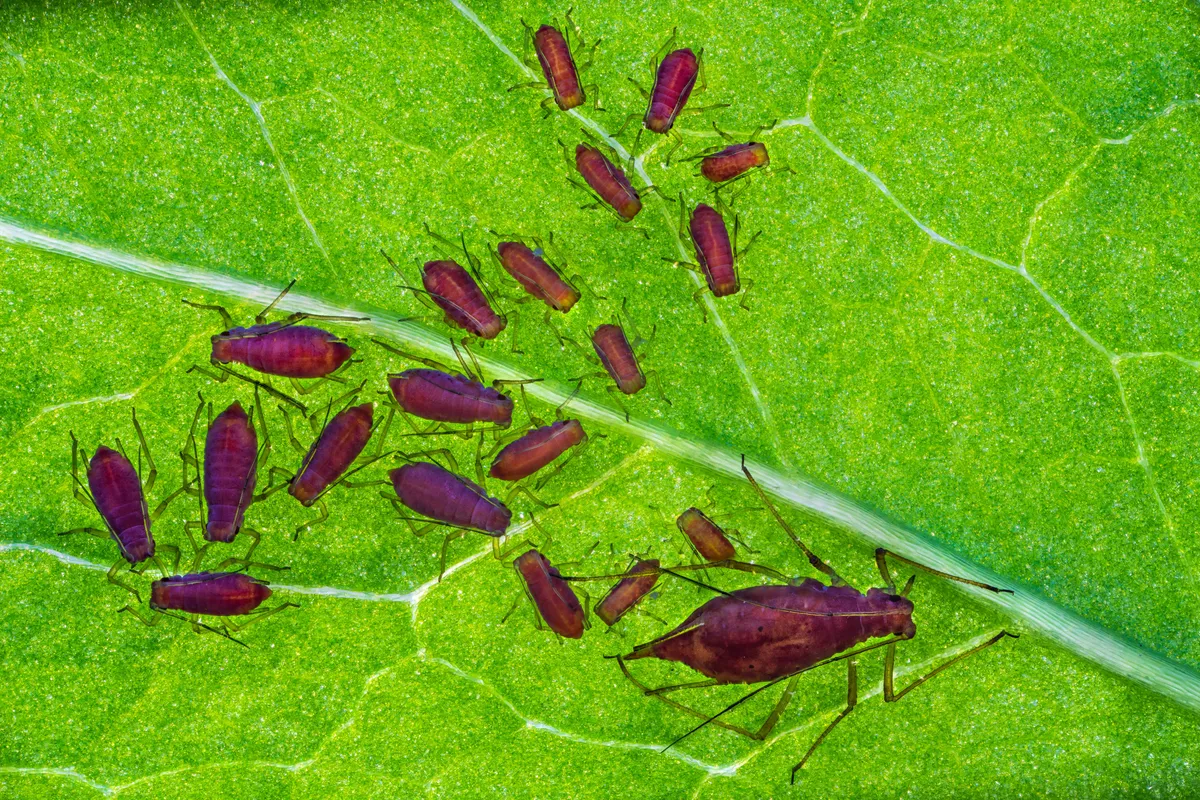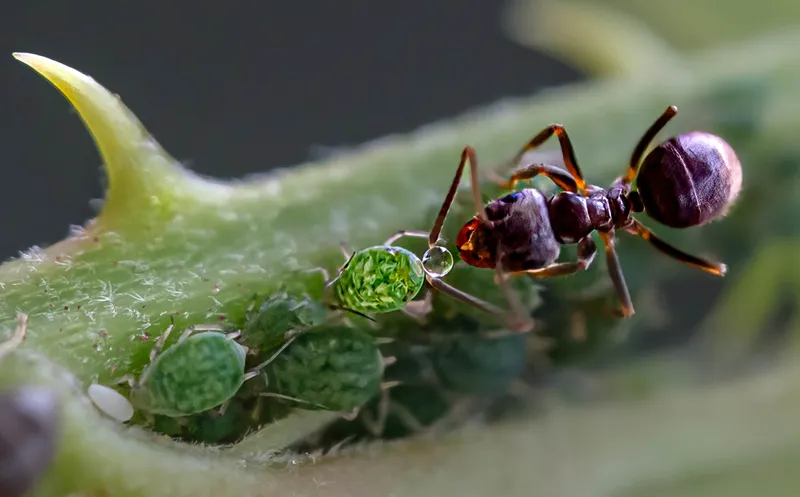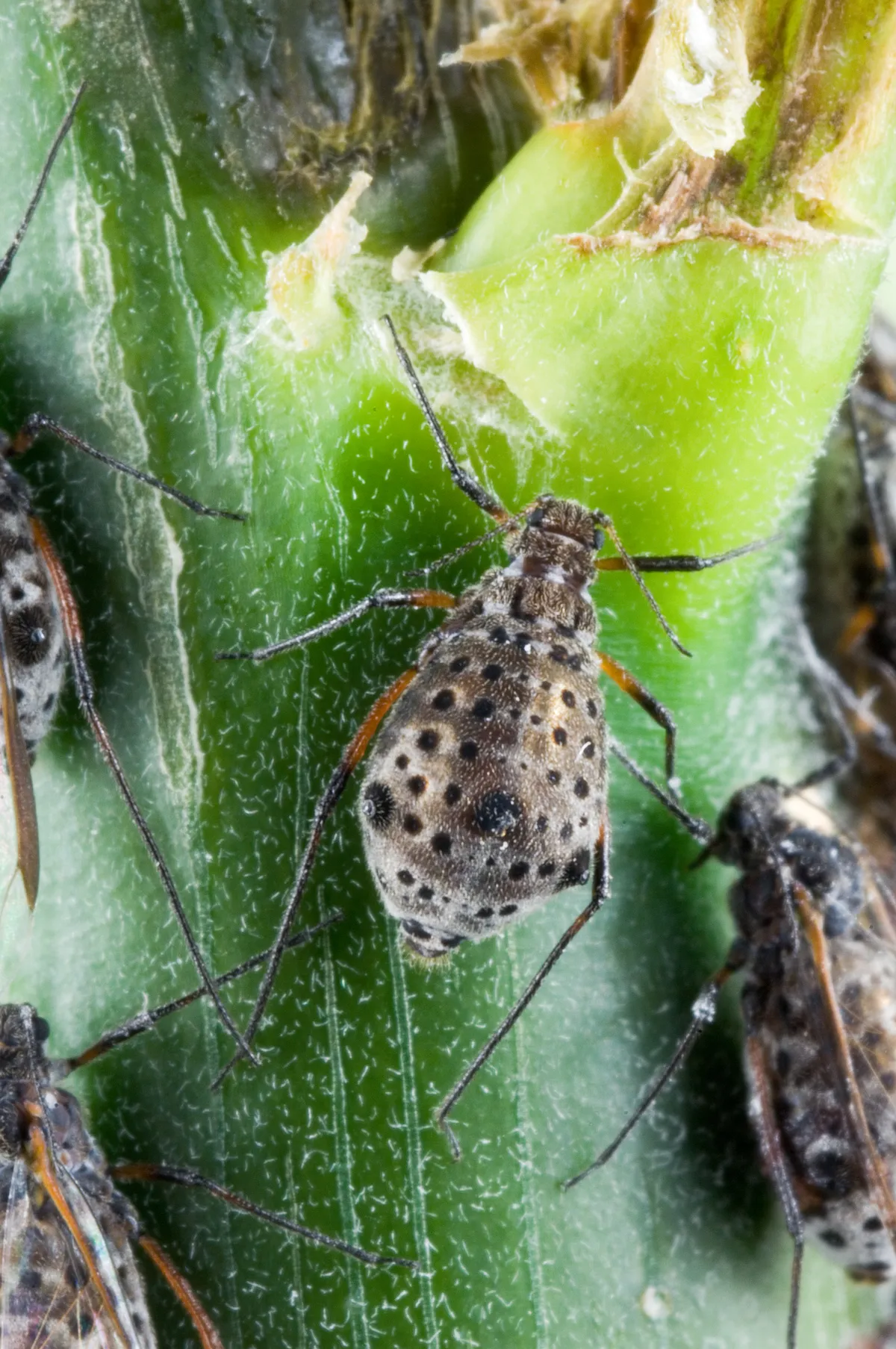“What’s the deadliest insect?” is a question I’m often asked when speaking to groups of school children in my outreach role at the Royal Entomological Society. Superlatives catch attention and are a ‘go to’ when trying to enthuse people about any kind of creature, not least insects. It’s a tricky one to answer of course as it depends on what is meant by ‘deadliest’, but farmers, and gardeners, the world over might say aphids are firmly in the frame.
Over 600 species of aphids are found in the UK
Despite their voracious ability to colonise plants, I would argue they are one of the most fascinating of all our common garden insects and there’s still so much to learn. Moreover, they provide an incredibly rich source of food for many other beneficial garden insects and birds and without them, gardens, as we currently know them, would be very different places.

Everything you need to know about aphids
Read more on our Small Stories series
More commonly known as greenfly, or blackfly, aphids are small sap-feeding insects which actually occur in a wide range of colours and live on a wide range of garden plants. With over 4,000 species worldwide they are one of the best-known groups of the Hemiptera or ‘true bug’ classification of insects. Over 600 species are found in the UK, and many are unwelcome in gardens due to their reliance on plant sap to sustain their highly successful colonies.
Aphids can clone themselves
Some of the most common types of garden aphid can clone themselves through an asexual process called parthenogenesis, which is a big advantage when colonising plants. Some reproduce sexually, with males and females, while some species can even do both and change their method of reproduction according to their environment and time of year.
Gardeners should switch to biological controls, as aphids adapt to chemical pesticides
They are excellent at adapting
Some aphids in the garden are generalists such as the peach-potato aphid (Myzus persicae), which can live and feed on a many more plants than just potatoes and peaches, including cabbages, carrots and tomatoes. Their piercing mouthparts are perfectly adapted to extracting the sugary sap from within plant stems and left unchecked they can quickly overwhelm individual plants. And some aphids can produce offspring with or without wings, known as wing dimorphism, depending on environmental conditions, resources available and the time of year. So, when food on a particular plant is running low, winged individuals are produced, and the population can expand by moving to another plant. This is one of the many reasons aphids are so successful.
Some species can even do both and change their method of reproduction according to their environment and time of year
Chemical pesticides are not a problem for aphids
The final, and perhaps most impressive weapon in the aphid’s arsenal is its ability to adapt to chemical pesticides, developing swift resistance that only serves to strengthen future generations. This continues to thwart attempts to control infestations in valuable food crops, but gardeners should see it as a clear sign to switch to naturally occurring biological controls. Aphids provide an important food source for many other beneficial garden insects, including ladybirds and hover flies, which can be encouraged to gardens as natural predators by improving year-round insect habitats as well as nectar and pollen sources. Parasitic wasps, aphid midge larvae and lacewing larvae all feast on aphids, alongside crab spiders, many garden birds and entomopathogenic fungi. In addition to encouraging naturally occurring predators, many biological control agents can be purchased to introduce to gardens seasonally, such as two spot ladybird larvae and common green lacewing larvae.

This month sees the unveiling of the Royal Entomological Society Garden, designed by Tom Massey and sponsored by Project Giving Back, at the RHS Chelsea Flower Show. Not only is it the first RHS Chelsea Show garden to be designed to support and study insect life of all kinds, but it will also be the first one to host working insect scientists (entomologists) throughout show week. And as the words ‘pest’ and ‘weed’ are being discouraged from the horticultural lexicon, it feels like the tide is finally turning and gardeners everywhere are becoming aware of their important role in the fight against climate change and biodiversity decline.
Find out more at www.royentsoc.org/chelsea
Aphid Facts
- Aphids wear their colours with pride! They come in every colour of the rainbow, so the common names ‘greenfly’ or ‘blackfly’ don’t really do them justice.
- Not all female aphids need to mate to reproduce. Within a couple of days of becoming an adult, 6 legged nymphs emerge and within a couple of weeks, an aphid can produce 50 or more offspring.
- In addition, aphids have telescoping generations, they can give birth to live young, and those offspring already have their young inside them too. So, if a grandmother arrives on a new plant, she can give birth to a mother with granddaughter already developing inside.
- Pea aphids (Acyrthosiphon pisum) can carry out a simple form of photosynthesis, capturing light energy with special pigments in their bodies.
- Aphids excrete excess sugar from their rear ends as honeydew, which can be a great resource for other insects. Ants, for example, “farm” certain species of aphid to collect a honeydew supply for their colonies. In return, the ants guard and protect the aphids. Some butterfly species, such as Purple Emperor, White Admiral, Holly Blue and four of our five hairstreak species, also feed on honeydew in preference to nectar from flowers

- Not content with colonising plants as they find them, some aphids can manipulate the tissues of plants to provide safer homes for their colonies.
- The Giant Willow Aphid (Tuberolachnus salignus) is the biggest in the world at a massive (for aphids) 6 mm in length. And yet nobody knows how it gets through the winter. It disappears from willows by mid-winter, often earlier, but where it goes, nobody knows, and neither males or eggs have ever been found. It has a giant shark-fin-like horn on its back – and nobody knows what it is for!

Tuberolachnus salignus
Follow #GISmallStories on social media to join the conversation, and don't miss all our Chelsea Flower Show coverage




